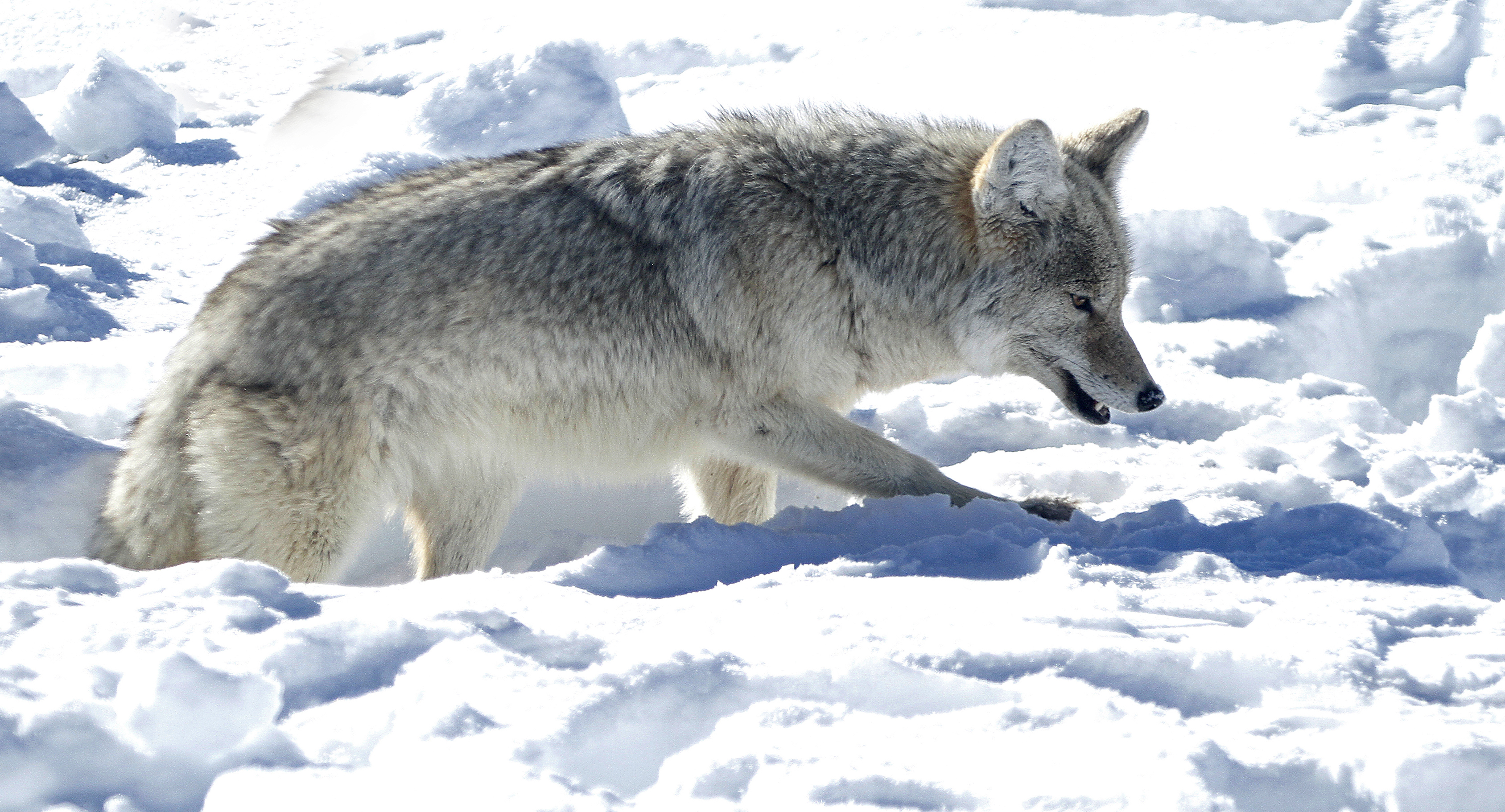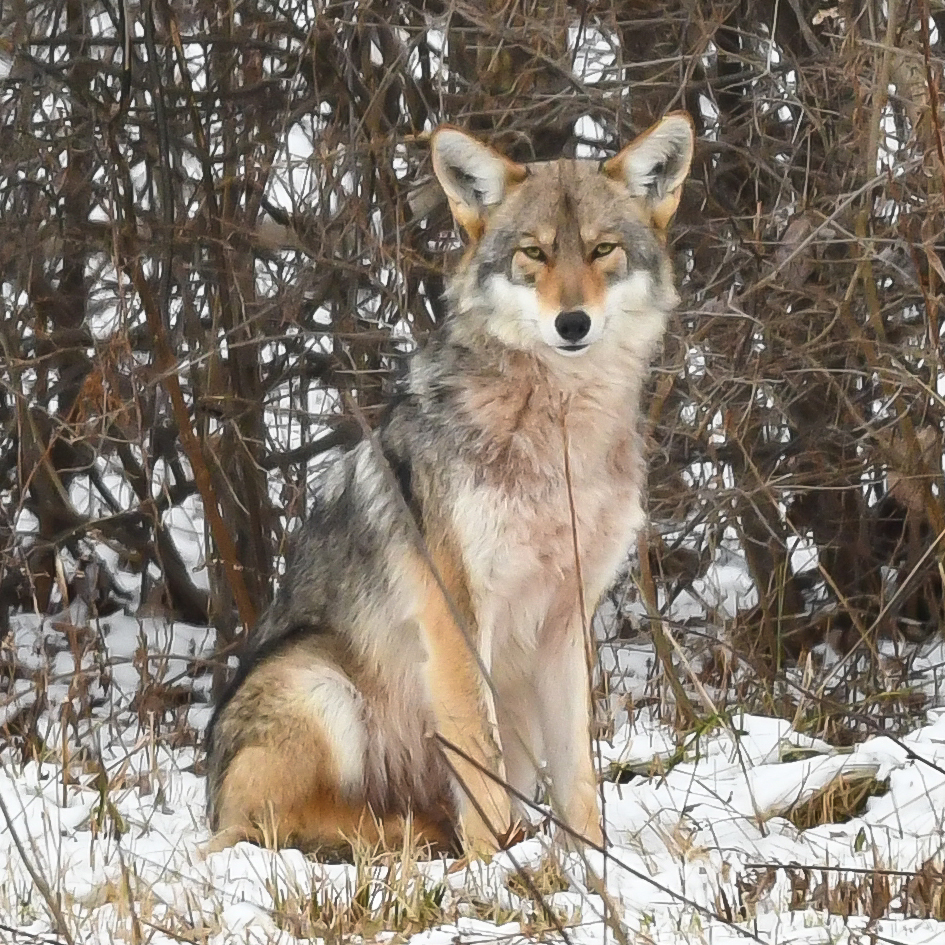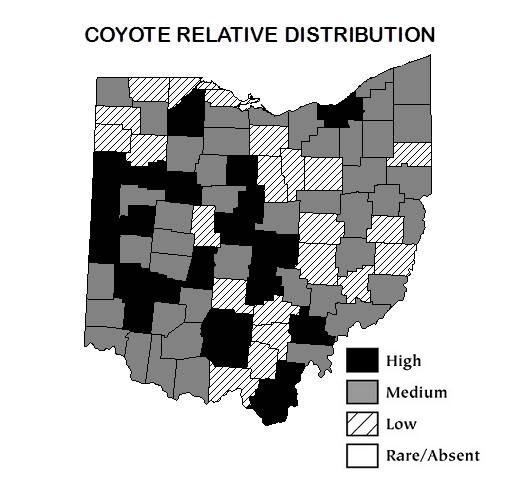CRAIG BIEGLER
Battelle Darby Creek Naturalist

This year marks the 100th anniversary of the first coyote sighting in Ohio. Over the last century, coyotes have spread throughout the state and are now abundant in every county. They colonized the eastern United States through a complicated interaction of ecology, human expansion and their own adaptability. How did they manage it, and what does it mean for us?
Until 1878, wolves lived in Ohio’s wilderness. They preferred to live in the forest and preyed upon large mammals like white-tailed deer. As European settlers destroyed the ancient forests and hunted the wildlife, wolves found fewer places to live and fewer deer to eat. Along with other large predators like puma and black bear, all of the wolves were driven away or killed. About 40 years later, the coyote, a species native to western North America, made its way to Ohio, finding that the former forest had been converted to vast areas of open farmland. There were no predators left and plenty of small animals for the coyotes to eat. It was a perfect environment for them to settle down in and thrive.
Coyotes weigh around 35 pounds but look much larger because of their dense winter coats. Photo/Tim Daniel
Coyotes are able to adapt to many different environments and can now be found throughout the United States, Canada and Mexico. There are often sighted in Alaska and can be found as far south as Panama. They are also learning to survive close to people; there are approximately 2000 coyotes living in downtown Chicago. Coyotes are opportunistic, which means they will eat anything they can catch. This includes their typical prey of small mammals, but they will also eat fruit, seeds, eggs and garbage. They will also eat cats and small dogs, so please keep your pets indoors or on a leash.
Coyotes are not usually not dangerous to people. They mostly hunt on their own and do not see humans as a food source. However, coyotes that have been fed by people can become aggressive. If you are ever approached by a coyote, make lots of noise and throw things at it.
Graph: Ohio Department of Natural Resources



It is time to ban the killing of wild animals for money and prizes in Ohio. While blood sports such as dogfighting have been condemned as barbaric and cruel, a little-known blood sport—the wildlife killing contest—occurs every year in the Buckeye State and often with coyotes in the cross-hairs.
It is illegal to obtain a wild animal for a pet unless you have a permit therefore no coyotes are raised to barbarically fight in the ring. Hunting in Ohio is for the conservancy of the land and wildlife. It is human to hunt and when a predator devours all the game animals in an area they move on and do it in another area. I would say the first style of hunting is barbaric as they will eat the face off a live calf. Thanks for your concern for dog fighting as I do not like it either. Have a nice day and don’t forget to thank a vet for is being able to comment.
Some people would like to stop the coyote hunting contests. However, those people will change their minds when their pets are killed and eaten by coyotes.
Coyotes are a non-native species to Ohio and have no natural predators. To control their numbers, hunting and trapping is necessary.
FYI – the Federal Government, with the support of farmers and ranchers, are responsible for the largest animal killoffs, particularly coyotes, ever!! Government sanctioned poisoning projects in the early to mid 20th century practically caused the extinction of wolves and coyotes in the US. It is not the licensed hunters that affect the populations of coyotes and other species, in fact, the Ohio Department of Natural Resources is responsible for the health and welfare of the “herds” and other wild animal populations, which are doing fine.
Need to take some out when they get over populated and start getting to farm animals
I have heard some years ago that Coyotes in Williams County had killed pet dogs in their yards as well as cats. Some times the pets were carried off but if they were chained to their dog house then they were left for their owners to find them in the morning. I wonder if any Coyote lovers have had a pet killed and eaten by them?
Of course this is hearsay as I did not see any of those killings!
When were coyotes nearly extinct? I don`t recall that happening.If your a coyote lover you must have a great dislike for our native red and grey fox.